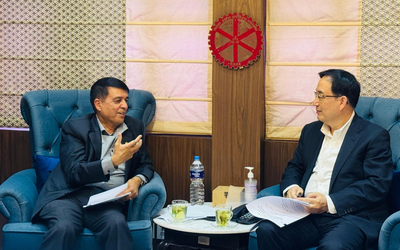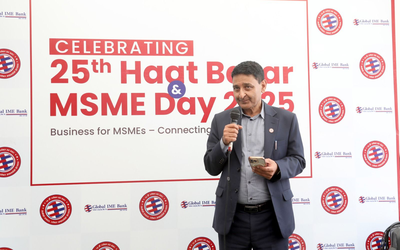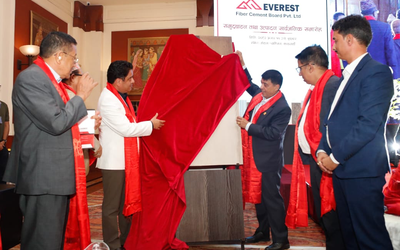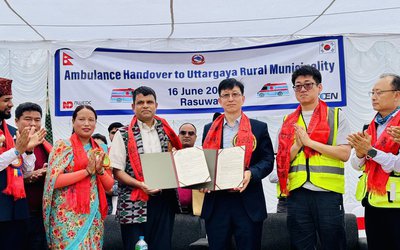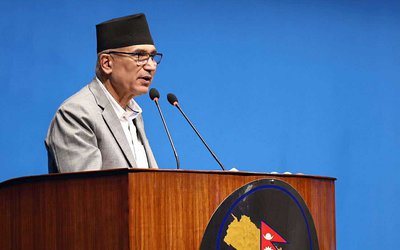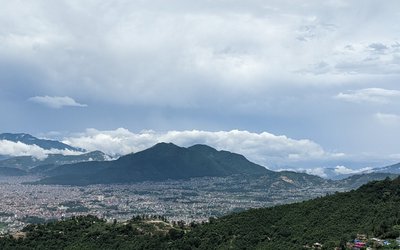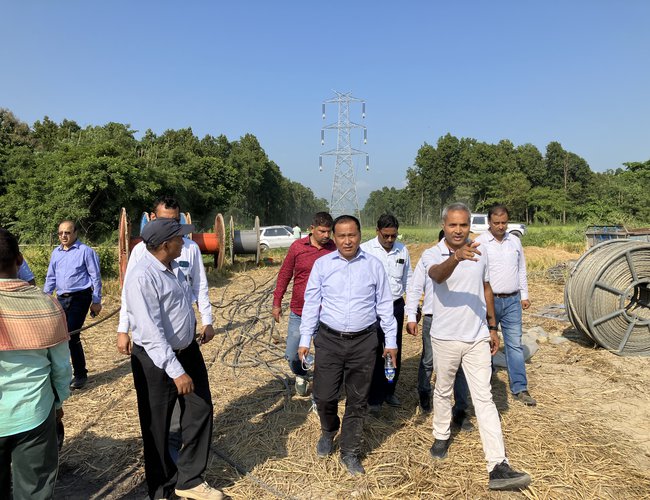
The wire pulling work for the Hetaunda-Dhalkebar-Inaruwa 400 kV transmission line project, which aims to strengthen the electricity transmission system in Nepal and promote electricity trade between Nepal and India, is currently underway. However, there have been some interruptions in certain areas during the wire-pulling process.
The transmission line strethces accross a distances of 288 kilometers running from Thanabhayang in Hetaunda sub-metropolitan city-11 of Makwanpur to Inruwa sub-station in Bhokraha Narsingh rural municipality-4 of Sunsari, passing through Dhalkebar in Dhanusha.
The construction of the transmission line is divided into two sections: Hetaunda-Dhalkebar spanning 134 km and Dhalkebar-Inaruwa spanning 154 km. Currently, 4 km of wire has been installed in the Hetaunda-Dhalkebar section, while 40 km has been installed in the Dhalkebar-Inaruwa section.
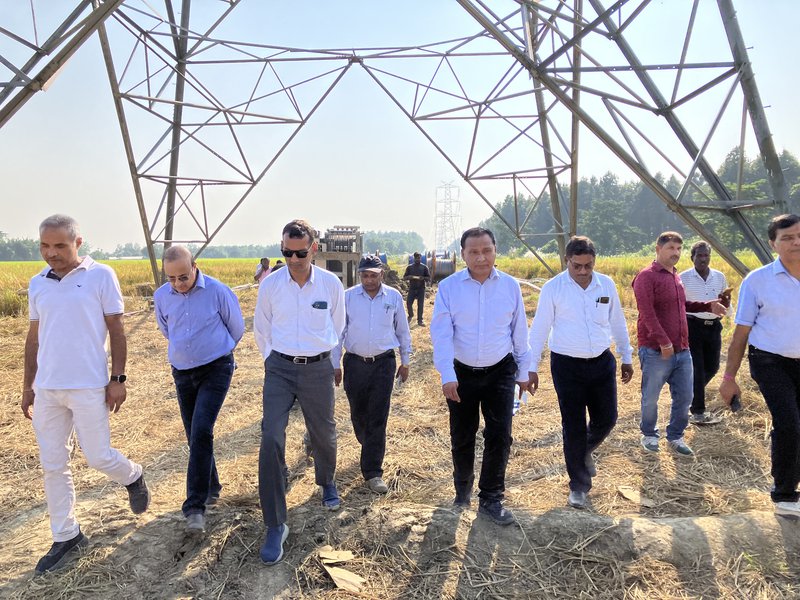
The focus of wire installation is currently on the Dhalkebar-Inaruwa section, which requires the connection of a total of 792 transmission line towers across hilly, Shivalik Chure, and Terai regions. So far, 757 towers have been installed, with 750 towers already erected. The remaining 35 towers are facing opposition from local residents who are demanding a route change in the route of the transmission line.
The work of pulling the wire is hindered when the locals, who have the right of way of the transmission line, obstruct it in certain locations. Currently, wire pulling work is underway in the Dhalkebar-Inaruwa section. Five teams have been mobilized for this task, aiming to complete it by December next year.
However, continued obstruction by the locals who are demanding to shift the route of the transmission line has resulted in only 35 towers being initiated.
The Nepal Electricity Authority is under pressure to quickly complete the transmission line to meet the electricity demand of the entire eastern region, including the Morang-Sunsari industrial corridor, during the upcoming winter season. Additionally, the authority aims to increase electricity imports from India and export surplus electricity generated domestically during the rainy season.
The team led by Kulman Ghising, the Managing Director of the NEA, monitored the wire pulling work in Ramdhuni Municipality, Sunsari on Thursday. Rakesh Surana, president of the Morang industry association, was also invited to brief the team about potential power supply issues that may arise in the Morang-Sunsari industrial corridor if the transmission line cannot be constructed due to obstacles and to provide an update on the ongoing work.
MD Ghising warned that without full state support for the completion of the strategically vital Hetounda-Dhalkebar-Inaruwa transmission line, a major disaster could occur.
Currently, five teams work on pulling wires despite local obstacles, but adding extra teams to accelerate the project is difficult.
The 400 kV transmission line is crucial for meeting the electricity demand in the eastern region, given that the three substations of 400-220 kV capacity are already prepared. Failure to construct this line would hinder the supply, resulting in electricity wastage leading to a potentially distressing situation. Furthermore, exporting saved electricity to India would be impossible without constructing the line.
Cooperation from the local administration, security agencies, and residents is necessary to avoid such a scenario. The construction of Hetaunda Sub-Metropolitan Wards 15, 16, and 17 in Hatia and Lalbandi Municipality's Jiyajor area of Sarlahi has faced six years of obstruction. There are currently 14 towers in the Hatia region, with two towers in Hetauda-11 Thanabhayang and eight in the Jiajor area.
Two additional towers are required to complete the line at Thanabhangmas substation, potentially impacting more than 46 houses constructed on Ailani (Public) land.
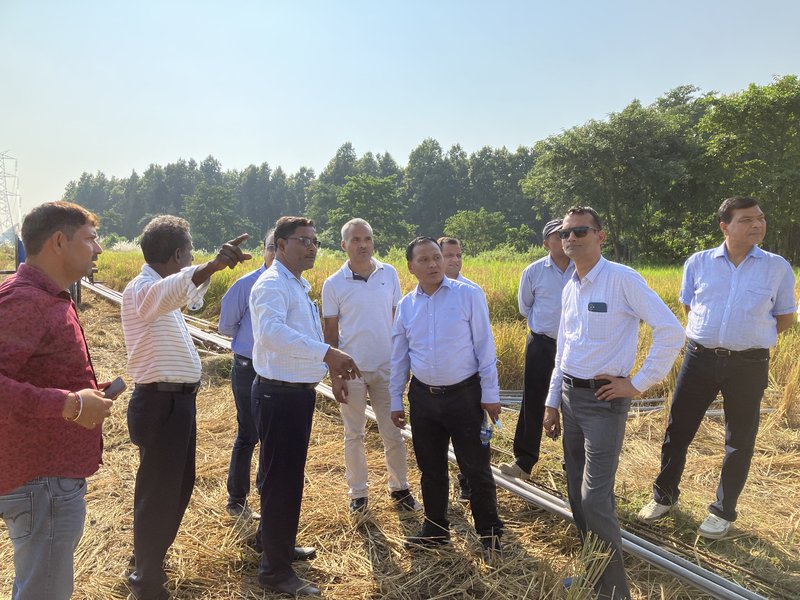
The NEA's continual efforts to remove local barriers have been unsuccessful so far. The transmission line spans 10 districts: Makwanpur, Bara, Rautahat, Sarlahi, Mahottari, Dhanusha, Siraha, Saptari, Udaipur, and Sunsari.
The construction has been impeded by local residents demanding the transmission line route be altered, a Supreme Court interim order, procedural complications concerning forest land use and tree felling approval, and the contractor's poor performance. The contract was signed in January 2069 with a 30-month target for completion.
The Hetaunda-Dhalkebar-Inaruwa 440 kV transmission line runs parallel to the existing 132 kV transmission line and the East-West Highway. The right-of-way area spans 23 meters in both directions from the transmission line's center point. T
The project will require tree removal in a 518-hectare forested area and acquisition of 30 hectares of private agricultural land. 475 acres of private land and 171 homes and other buildings will be affected by the right-of-way.
The project, which is estimated to cost $170 million US dollars, is part of the Nepal-India Power Transmission and Trade Project and is being funded by the Nepal government, Electricity Authority, and concessional loans from the World Bank. After the World Bank loan has been repaid, the remaining work is being financed by the Nepalese government and authorities.
- Weather Forecast: Generally Cloudy With Heavy Rainfall Is Likely In One Or Two Places Of Kathamndu Valley, Madhesh And Koshi Province
- Jul 01, 2025
- The Situation Pushes Women Journalists To Speak Louder, Experts Emphasize
- Jun 30, 2025
- SPI NEPAL: Prosperity Through Clean Energy
- Jun 30, 2025
- PM Oli Meets Spanish Prime Minister
- Jun 30, 2025
- FM Dr. Rana Said Nepal recognises constitutional guarantees to citizens' right to food
- Jun 30, 2025

